

Price: $229
Weight: 12.5 oz. (women’s)
Waterproofing: 3L H2No Performance Standard
What we like: A streamlined but functional design with reliable protection and a strong sustainability slant.
What we don’t: Comparable in weight to other Patagonia shells but without pit zips; doesn’t stand out in any major way.
See the Women's Patagonia Boulder Fork See the Men's Patagonia Boulder Fork
Patagonia is an irrefutable leader in the rain jacket market, and the Boulder Fork is the latest addition to their well-rounded collection. Slotting in between the everyday-friendly Torrentshell and more technical Granite Crest, the new shell is designed to minimize bulk without sacrificing protection. While testing the women’s version on a five-day backpacking trip in Chilean Patagonia, we found that the streamlined design does make a couple compromises—including no pit zips to dump heat—but it’s overall another trustworthy and thoughtfully built rain shell from Patagonia. Below we outline our experiences with the Boulder Fork. To see how it stacks up to the competition, check out our articles on the best rain jackets and best women’s rain jackets.
We’ve had positive experiences with Patagonia’s in-house waterproof membrane, and the Boulder Fork proved to be yet another highly protective and reliable use of the technology. Along with the 3-layer H2No Performance Standard waterproofing, Patagonia equipped the jacket with quality seam taping and a durable water-repellent (DWR) finish that prompts moisture to bead up and roll off the exterior rather than soak through. We didn’t experience any true deluges on our backpacking trip in Patagonia, but the Boulder Fork performed flawlessly during a bout of sustained rainfall and did a nice job combatting wind, too.
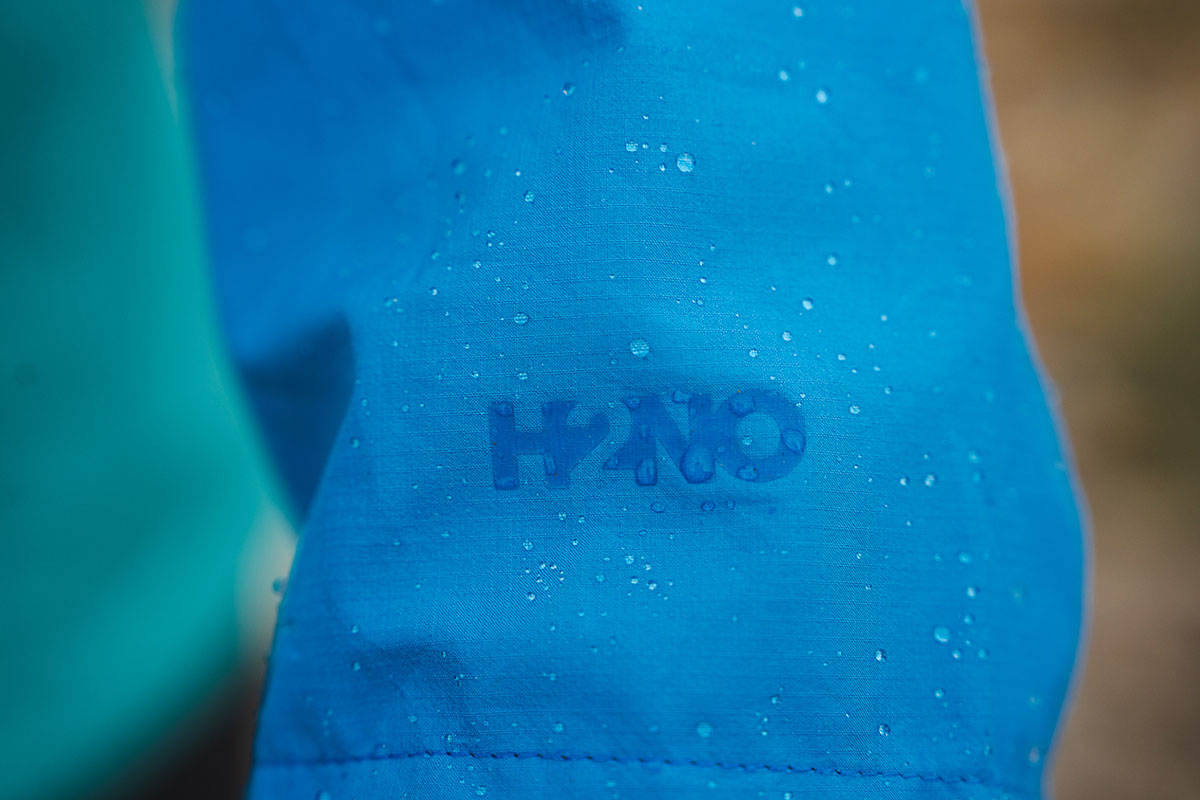
The Boulder Fork also comes with several features to batten down the hatches. For starters, the hood is adjustable via a drawcord at the back and has a stiff brim to deflect moisture. I did find the brim prone to sinking down over my eyes, but adding a ball cap underneath solved the issue. You also get hook-and-loop tabs along the cuffs for sealing out weather, along with a single drawcord cinch at the hem. Finally, all of the zippers are protected in some way: The main zipper and hand pocket zippers are waterproof, while the chest pocket opening is guarded by a fabric flap.
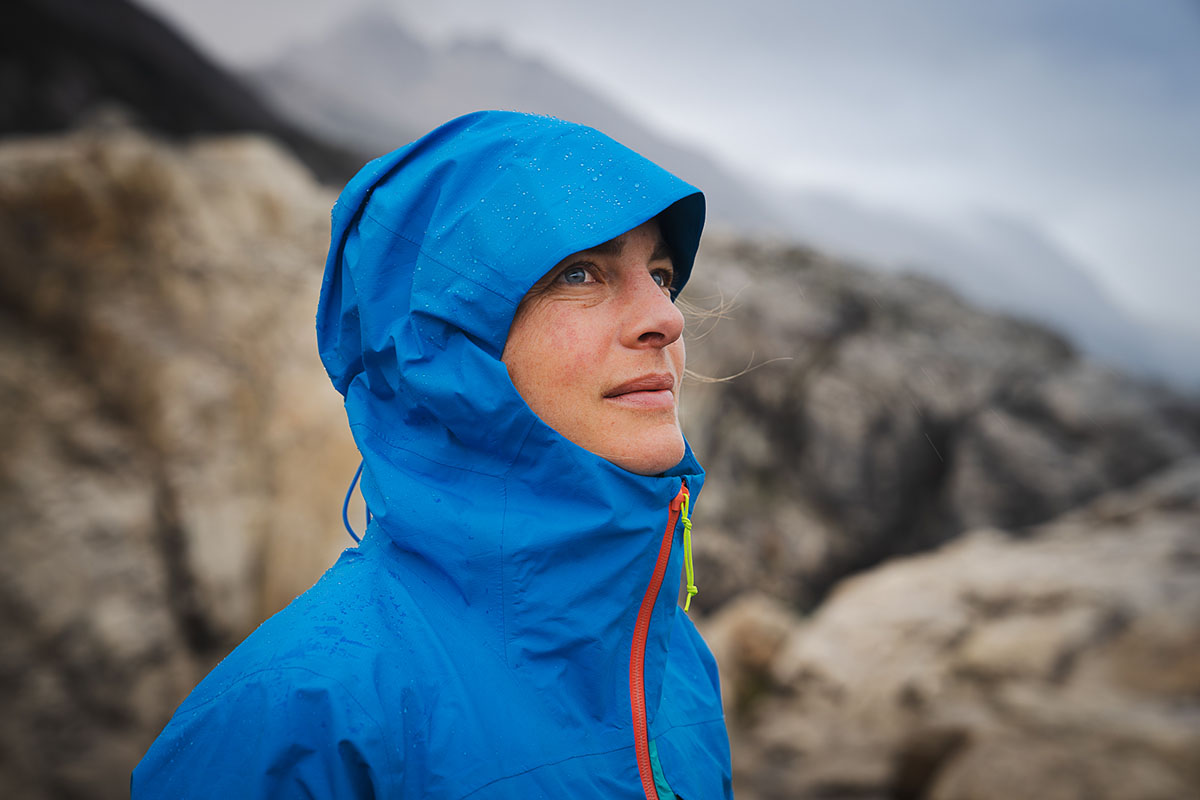
Waterproofing and breathability are inherently at odds, but the Boulder Fork strikes a pretty solid balance. The 3-layer construction plays a big role: The waterproof membrane is covered on the inside with a soft tricot backer, which helps wick moisture (i.e., sweat) away from the skin. For reference, many rain jackets use 2- or 2.5-layer constructions instead, which can result in a noticeably clammy feel. However, it’s important to note that the Boulder Fork lacks pit zips for dumping excess heat in a hurry, which was likely an effort to minimize bulk. I ended up lowering the front zipper when I started to build heat while backpacking, but that’s only an option in mild conditions.
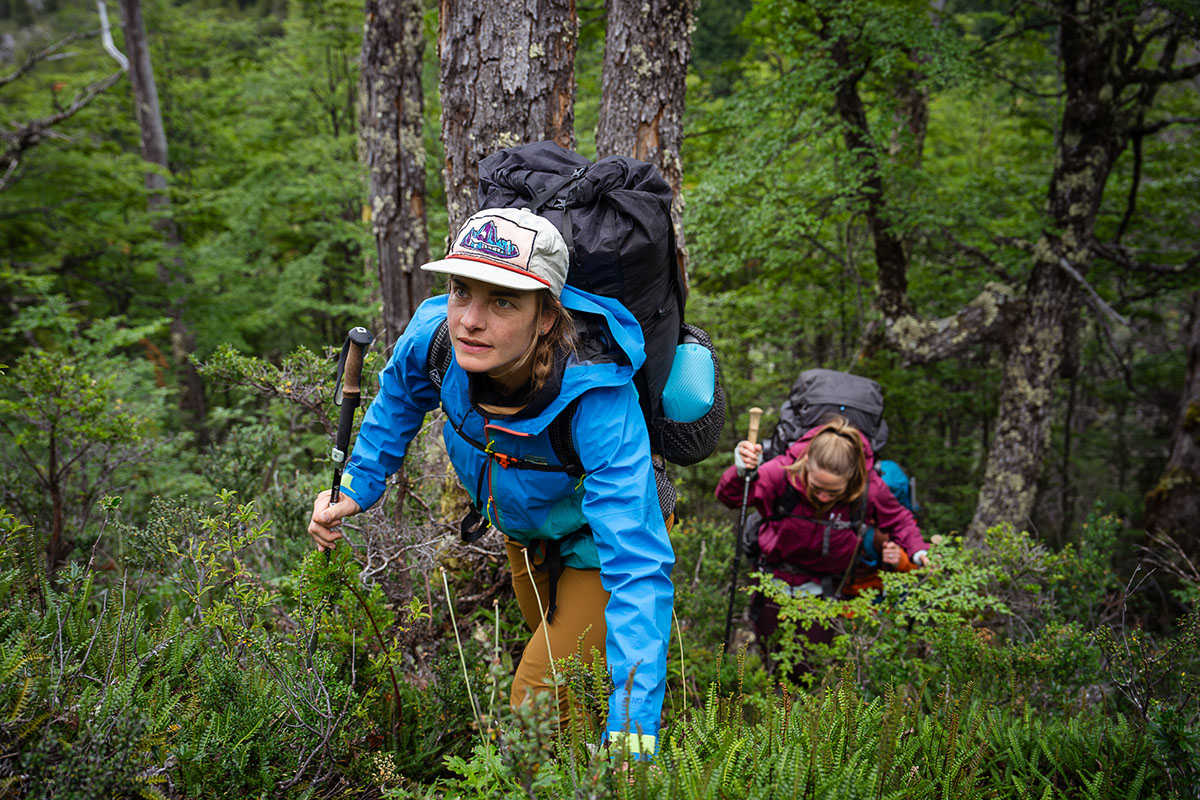
Comfort varies widely between rain jackets, and the Boulder Fork scores fairly high marks. As I touched on above, the jacket’s interior is fully lined and avoids the sticky, plasticky feel of many 2- and 2.5-layer competitors when working up a sweat. Patagonia also included a soft patch of fleece at the back of the neck, which is a small but thoughtful touch. And unlike the brand’s cheaper Torrentshell, I didn’t find the Boulder Fork to be overly stiff or bulky-feeling. You can get better comfort and mobility with a stretch-infused design like Black Diamond’s StormLine Stretch or Rab’s Kinetic Alpine 2.0, but we’ve found that protection typically drops as a result of the more porous fabric.
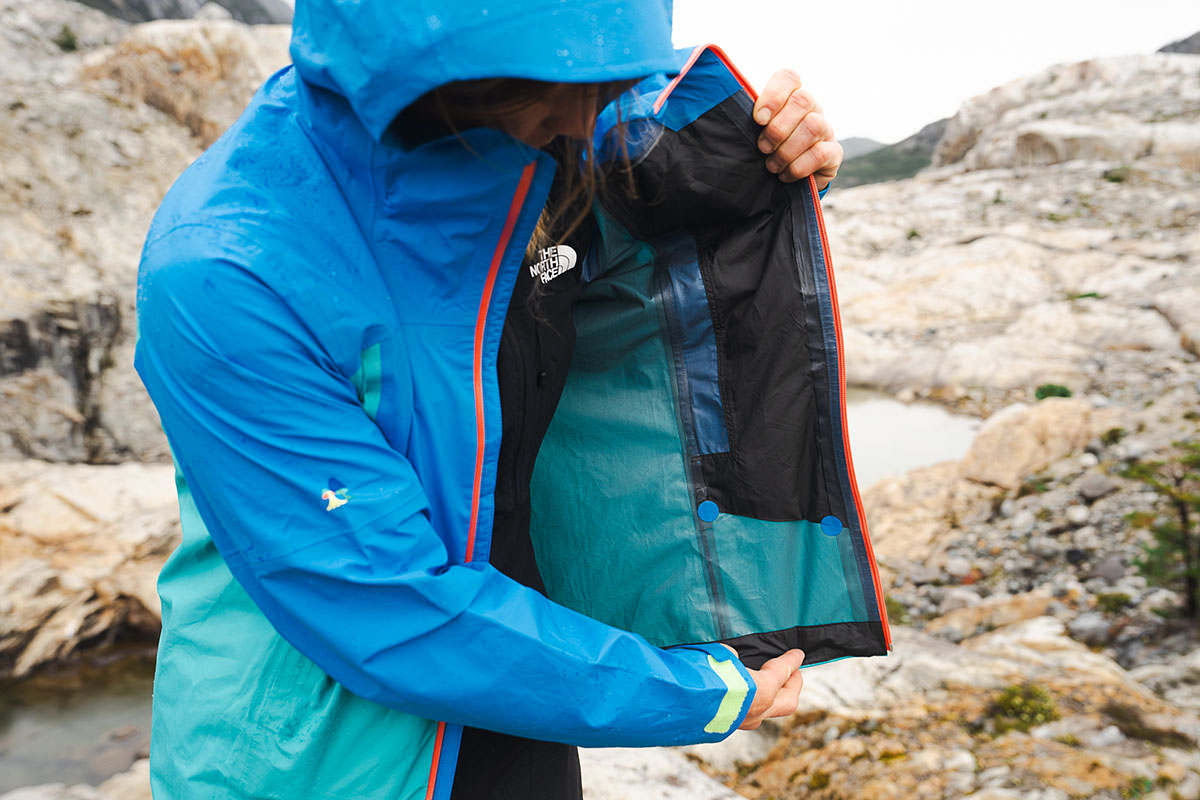
At 12.5 ounces for the women’s version, the Boulder Fork is about average among performance-ready, 3-layer rain shells. For comparison, it splits the difference between two other Patagonia favorites: their cheaper Torrentshell 3L (12.4 oz.) and upgraded Granite Crest (12.6 oz.) jackets. It also stacks up competitively to more premium alternatives like Arc’teryx’s Beta LT Jacket (12.3 oz.) and Rab’s Kinetic Alpine 2.0 (13 oz.). Serious-backcountry-goers can go lighter with a minimalist design like Norrøna’s Falketind Gore-Tex Paclite (7.8 oz.), but that jacket has a less breathable 2.5-layer construction and forgoes hand pockets. In practice, the Boulder Fork was light enough that I didn’t notice it, and it packed down fairly small for shoving in my pack. There’s no dedicated stuff pocket—which is something you get with both the Torrentshell and Granite Crest—but I found it easy to roll the jacket into its hood for storage.
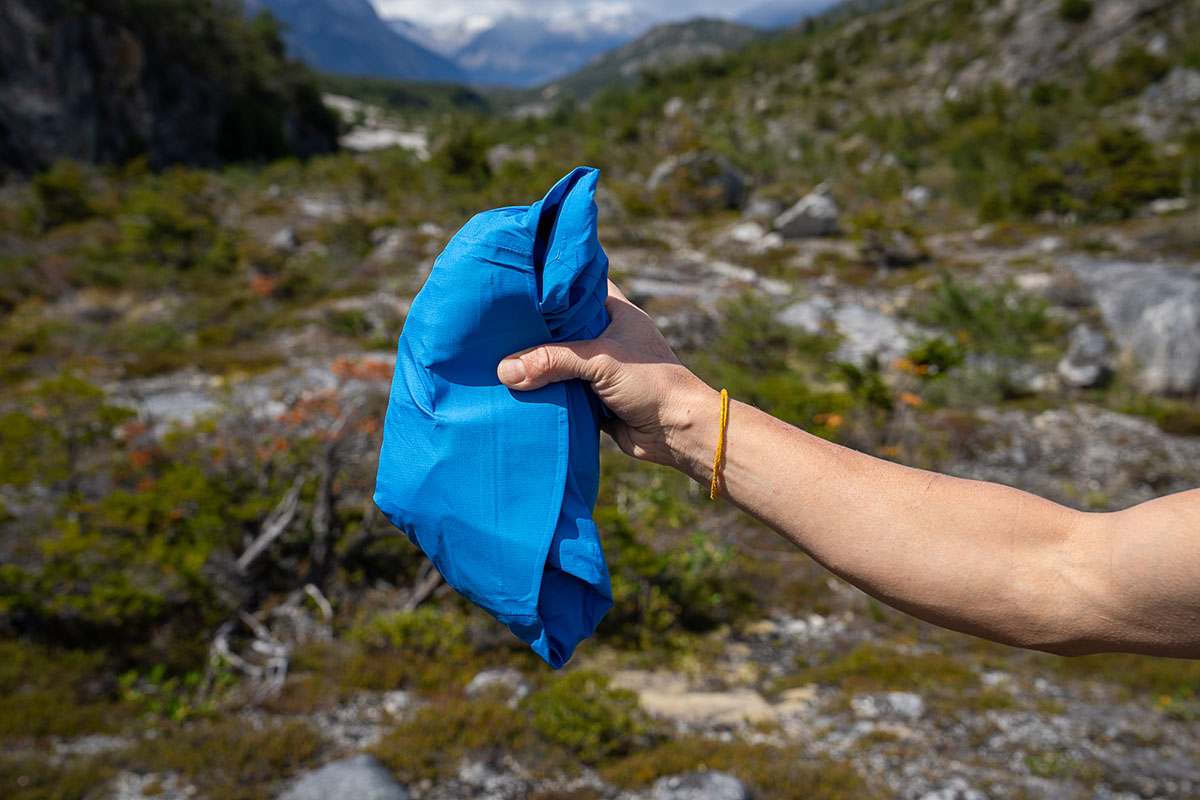
Patagonia shells rarely disappoint from a build quality standpoint, and the Boulder Fork Rain Jacket is a case in point. The jacket’s 30-denier (D) shell is thinner than what you get with the more everyday-friendly Torrentshell (50D) but plenty hardwearing, in my experience. And all of the smaller details are up to Patagonia’s typical level of quality, from the reliable water-resistant zippers to the hood and hem drawcords. All told, it’s a decidedly premium-feeling design that I expect to hold up well over the long term. And while entirely subjective, I love the retro styling of the Subtidal Blue colorway that I tested, which boasts fun details like an original Patagonia logo, a small mushroom embroidered on the right arm, and neon cuff adjustments.

The Boulder Fork’s feature set is fairly streamlined but not overly so, in my opinion. Starting with storage, the hand pockets are generously sized and positioned high enough to clear a climbing harness or backpack hipbelt—I had no issue accessing my phone while hiking. There’s also a chest pocket at the left side that’s great for stashing a map, satellite messenger, or keys. Unlike the hand pockets, the chest pocket doesn’t have a waterproof zipper but does include a fabric flap to protect against moisture. Moving onto the hood, the design is low-profile, boasts a laminated visor for deflecting rain, and has a single drawcord at the rear for dialing in fit (note: It’s not helmet-compatible). Rounding out the feature set are hook-and-loop-equipped cuffs and a drawcord to cinch the hem, which is routed up through one of the hand pockets.
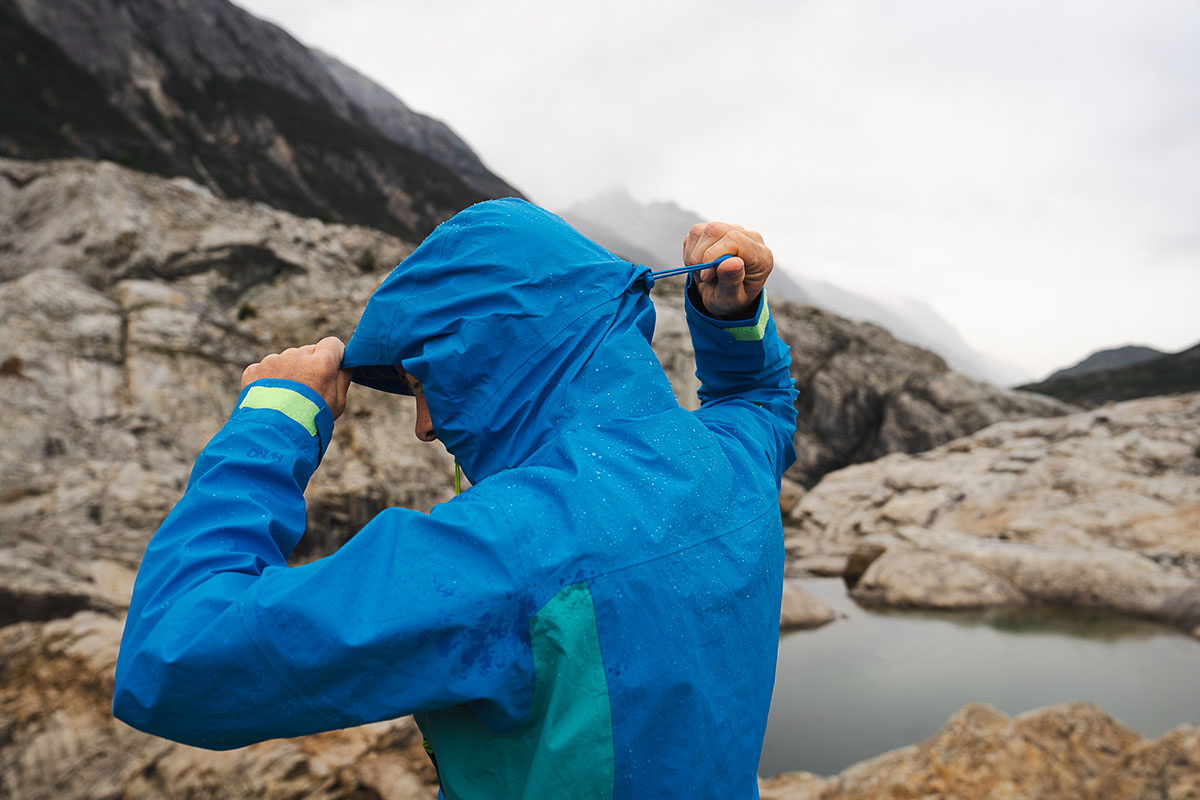
I ordered my usual women’s size small in the Boulder Fork and found the fit to be mostly spot-on. While less form-fitting than performance pieces like Arc’teryx’s Beta LT Jacket, the Patagonia’s “regular” fit makes it easy to layer underneath without feeling overly roomy when worn on its own. The Boulder Fork did feel a little short on me—I wish the jacket had more coverage when sitting down or bending over—although the 29.8-inch center back length is right in line with the competition. And importantly, I didn’t have any issues with overall mobility or the jacket riding up underneath my hipbelt.
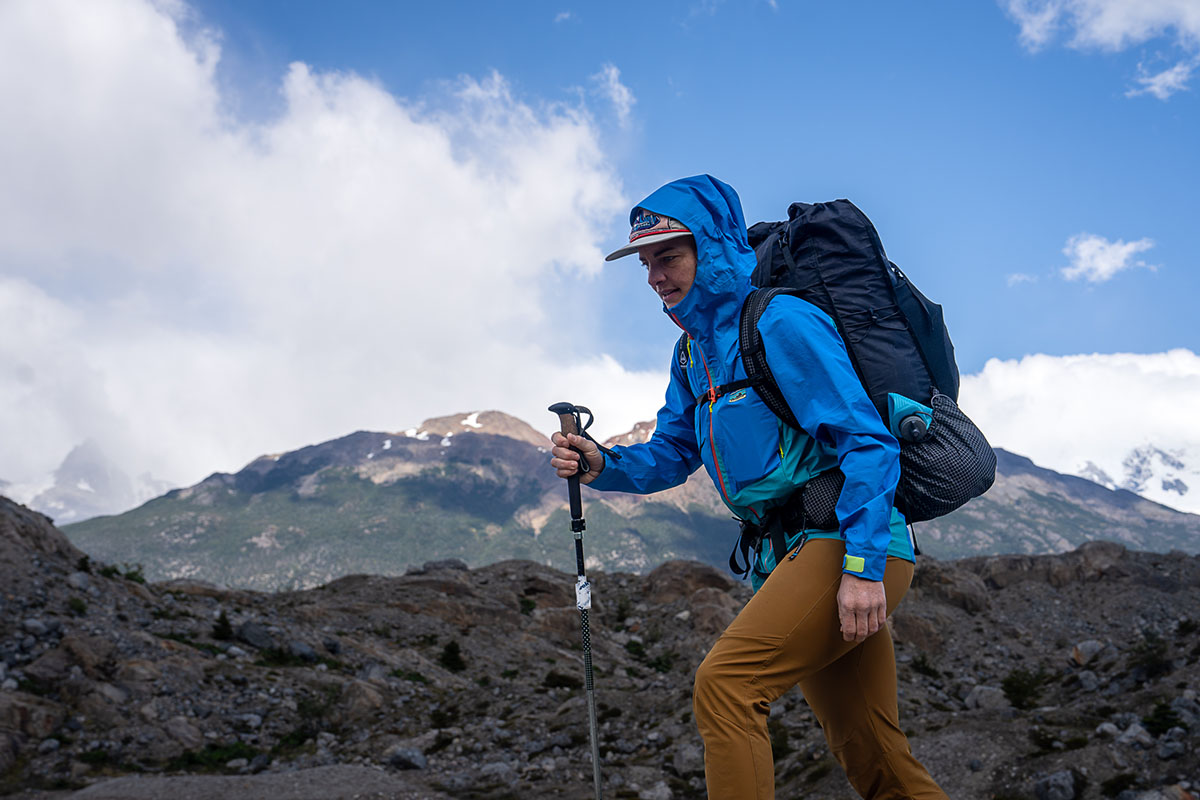
Patagonia has been at the forefront of the outdoor industry’s sustainability push for years, and the Boulder Fork is another intentionally built piece. For starters, the jacket uses recycled polyester for both the face fabric and tricot backer, along with a PFC/PFAS-free DWR finish that’s made without perfluorinated chemicals. With many states stepping up to ban the sale of items that include PFCs, the outdoor industry is seeking better solutions for water- and stain-resistant finishes (for more, you can read about Patagonia’s take on the issue). Finally, the Boulder Fork’s Fair Trade certification indicates that Patagonia put extra money into production to ensure workers have access to fair compensation and programs like healthcare and childcare services.

We put the women’s Boulder Fork through its paces for testing in Chile, and the men’s version is largely identical apart from some minor differences. In comparing the two, the men’s Boulder Fork Rain Jacket is a little heavier at 13.7 ounces, comes in different colorways, and is available in sizes up to 3X (the women’s model only goes up to XXL). Otherwise, the two designs share the same feature set and overall construction, including the use of Patagonia’s in-house H2No membrane, a 30D shell fabric, and a “regular” fit for layering underneath.
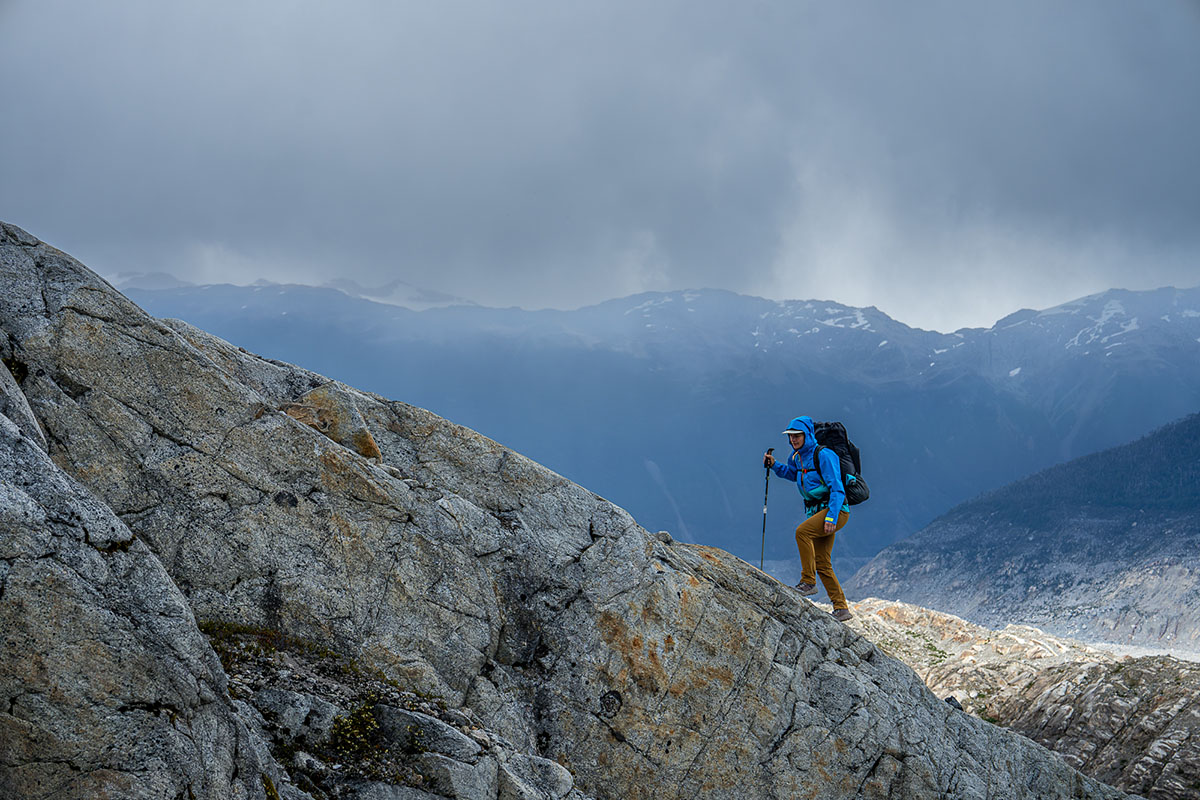

| Jacket | Price | Weight | Category | Waterproofing | Pit Zips | Packable |
|---|---|---|---|---|---|---|
| Patagonia Boulder Fork | $229 | 12.5 oz. | Hiking/daily use | 3L H2No | No | No |
| Patagonia Torrentshell 3L | $179 | 12.4 oz. | Daily use/hiking | 3L H2No | Yes | Yes |
| Patagonia Granite Crest | $279 | 12.6 oz. | Performance/hiking | 3L H2No | Yes | Yes |
| OR Motive AscentShell | $229 | 1 lb. | Hiking/daily use | 3L AscentShell | No | Yes |
| Arc’teryx Beta LT | $450 | 12.3 oz. | Performance/hiking | 3L Gore-Tex | Yes | No |
The Boulder Fork is Patagonia’s mid-range design and slots in between two other leading rain jackets: their Torrentshell 3L and Granite Crest. Compared to the former, the Boulder Fork costs an additional $50 but is more streamlined overall, including a thinner shell (30D vs. the Torrentshell’s 50D), no pit zips, and a single adjustment point for the hood (the Torrentshell has three). The Torrentshell also packs down into its own pocket with a fabric loop for attaching to a carabiner. Both jackets use 3-layer H2No membranes for waterproofing and tricot linings for next-to-skin comfort, although we found the Boulder Fork to be notably less stiff and crinkly (likely due to its thinner shell). The Torrentshell’s storm flaps covering the main zipper also give it a bulkier look and feel, although there’s essentially no weight difference between the two. All in all, the Boulder Fork is sleeker for dedicated outdoor use, but the Torrentshell wins out in value and crosses over better for everyday wear.
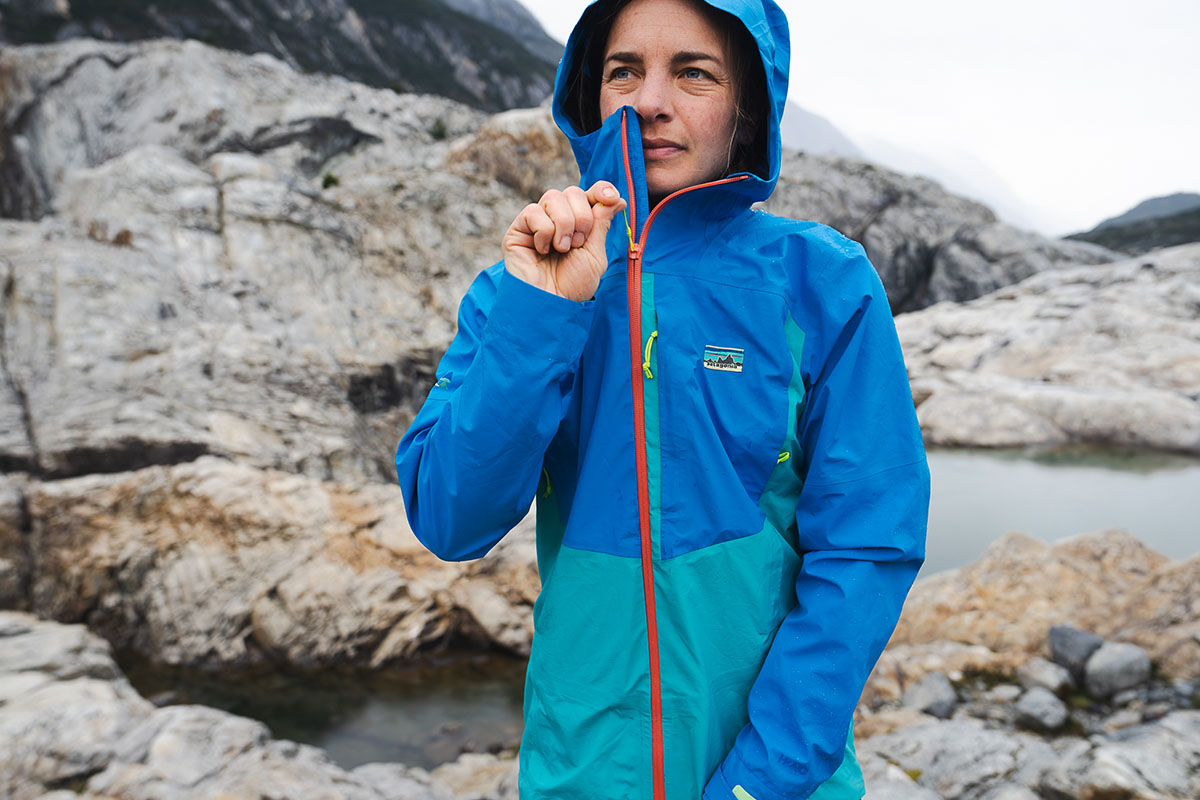
Next up is the Granite Crest, which is $50 pricier than the Boulder Fork but comes with several upgrades. These include two-way pit zips for quickly releasing heat while on the move, a dedicated stuff pocket for storage, and two additional drawcords at the front for fine-tuning the fit of the hood. The Granite Crest also ups the sustainability ante with a shell made from recycled fishing nets. Apart from those differences, the two jackets weigh around the same, boast 30D exteriors, and showcase Patagonia’s typical attention to detail. If you’re willing to spend slightly up, we think the Granite Crest’s additional features—without incurring a weight penalty—are worth it, especially for performance use (for more, see our in-depth review).

Moving away from Patagonia’s lineup, Outdoor Research’s Motive AscentShell Jacket stacks up pretty closely to the Boulder Fork. Both designs cost $229, feature premium 3-layer constructions, have comfortable interiors that aren’t prone to feeling clammy even when working up a sweat, and leave out pit zips. However, that’s about where the similarities end: The Motive has a thicker (50D) shell fabric than the Patagonia and adds built-in stretch for better mobility, but weight jumps to a fairly hefty 1 pound. The OR’s cuffs are also too loose to create a good seal (there are no Velcro adjustments), and the hand pockets aren’t accessible under a hipbelt. In the end, the Motive’s boost in durability isn’t enough for us to give it the edge over the lighter and more refined Boulder Fork.

Our final competitor is a bit of a stretch price-wise but a no-brainer for serious performance use: Arc’teryx’s $450 Beta LT. For waterproofing, Arc’teryx opted for a hardshell-like, 3-layer Gore-Tex construction that delivers trustworthy protection for 4-season backcountry use. You also get upgrades like a helmet-compatible hood, pit zips for venting, and a slightly thicker 40D shell fabric—all for 0.2 ounces less than the Boulder Fork. And compared to the Patagonia, the Beta LT’s “fitted” shape makes it harder to layer heavily underneath but is very flattering and minimizes bulk. Opting for the Boulder Fork will save you a whopping $221 with only small compromises in protection and long-term durability, but avid backcountry-goers who like to get out year-round will benefit from spending up for the Arc’teryx.